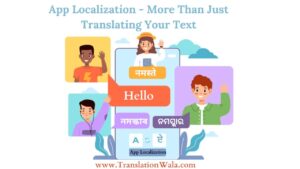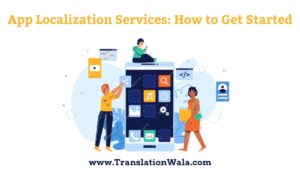It looks like the world is your oyster. That’s at least the dream of a lot of app makers. To reach people all over the world, it’s not as easy as pressing “publish.” Here comes App Localization, the magic factor that makes your local app work everywhere. In other words, the proof is in the food (or sushi?). I want to give you ideas by telling you about companies that figured out how to localize their apps and took them to new heights.
Case Study #1: Duolingo – Learning Goes Global
Do you remember the nice owl who taught you Spanish slowly and carefully? It’s not just owl power that made Duolingo the most popular language learning app in the world, with more than 300 million users. A big part was played by localization. Duolingo made learning a language fun and easy for a wide range of people by carefully turning lessons and game-like experiences into more than 30 languages. As a result? Growth in new areas like China, India, and Brazil, where customized marketing efforts have helped increase downloads even more.
Key Takeaway: Cultural awareness is very important. Duolingo changed jokes, references, and funny things to make them more relevant to people in the Philippines. This made learning even more fun.
Case Study #2: Airbnb – Opening Doors Around the World
Airbnb has grown from a strange couch-surfing site to a global hotel giant. Its story shows how important it is to adapt to local needs. They carefully turned listings, user reviews, and contact tools into many languages, which helped hosts and guests around the world trust and understand each other. Airbnb also took into account local habits and tastes by providing payment choices that were specific to different areas and changing the search filters to match the kinds of housing in those areas.
Key Takeaway: Do more than just translate. Airbnb customized the whole user experience, from the payment methods to the search tools, so that users from all over the world could have a smooth and culturally relevant experience.
Also Read: How to Translate Your Website for Maximum Impact

Case Study #3: Niantic – Pokémon GO Catches the World
Remember how everybody was after virtual Pikachus in the summer of 2016? Not only did Niantic’s Pokémon GO go popular, it was also a great example of how to localize an app for use around the world. With regional Pokémon spawning, culturally important events, and language support for many areas, the game was carefully made to fit its surroundings. This made people more interested and helped players all over the world feel like they were part of a group.
Key Takeaway: Think locally and move globally. Niantic took into account local differences while keeping the core gaming the same. This made the experience truly engaging and open to players from all over the world.
Beyond the Case Studies: Mastering the Localization Game
These success stories aren’t just happy accidents. There’s a strategic approach to app localization that any developer can follow:
- Identify your target market: Find out about the population, language choices, and cultural sensitivity in the areas you’re interested in.
- Prioritize key languages: Start with languages that your current users speak or that people in places that are growing quickly speak.
- Internationalize your app structure: Use adjustable styles and scalable UI elements when you design with translations in mind.
- Find the right translation partner: Pick professional translators who know the tone and viewers of your app.
- Adapt, don’t just translate: Change jokes, references, and images to fit the culture of the people who will be using them.
- Test and iterate: Ask native users for feedback, and keep improving the regional experience of your app.
Conclusion:
It’s not enough to just App localization, you need to connect it with new users. You can be successful on a world scale if you use cultural awareness, strategy planning, and a user-centered approach. Get your “passport” ready, believe in the power of localization, and watch your app take the world by storm!



